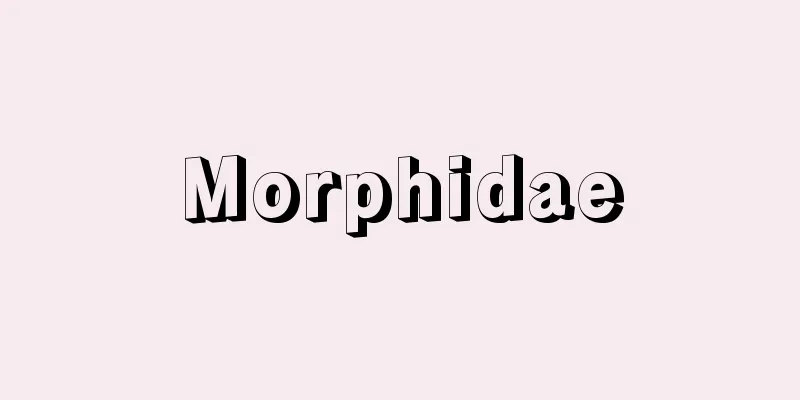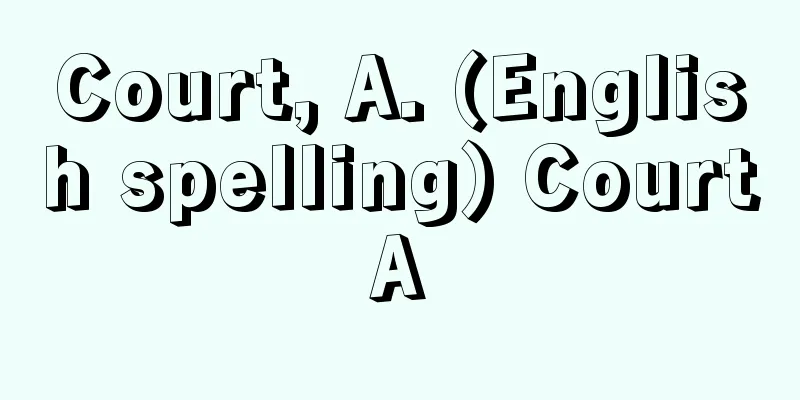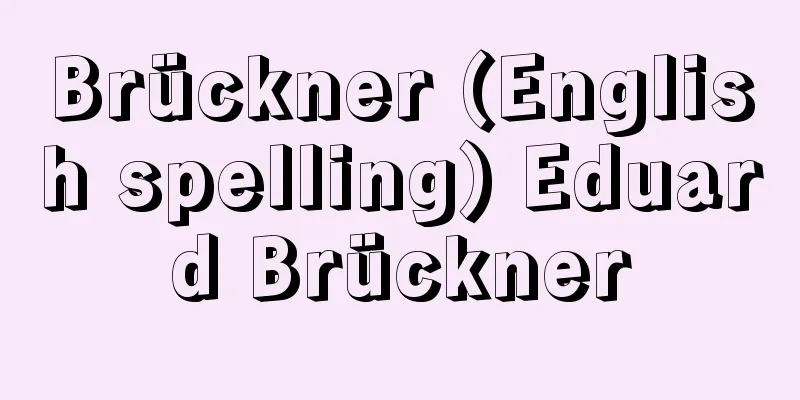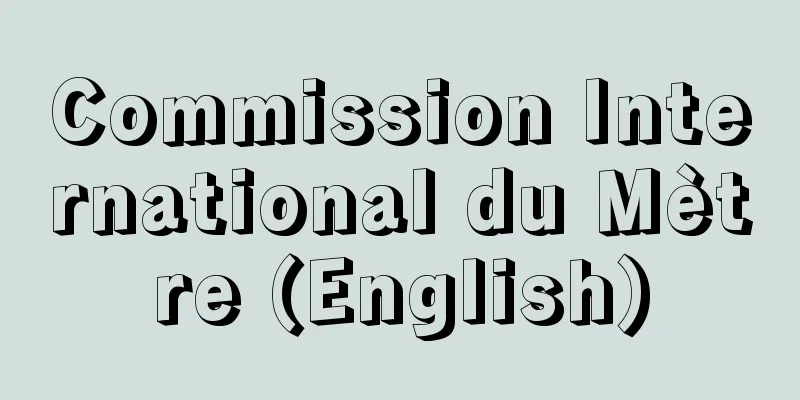Health insurance - kenkouhoken

|
Generally, it is used to refer to medical insurance for employees of private companies, in contrast to National Health Insurance (Kokuho), which is for self-employed people. It is often abbreviated to "Kenpo." It is sometimes used as a general term for various types of medical insurance, but here we will follow the general usage. [Yasuhiko Yamazaki November 13, 2020] HistoryHealth insurance was established as Japan's first social insurance through the Health Insurance Act of 1922 (Taisho 11), and came into effect in 1927 (Showa 2). Initially, coverage was limited to factory and mine workers and office workers with an annual income below a certain amount, and dependent family members were not eligible for benefits, but during the wartime regime of World War II, coverage was expanded to include office workers and their families. The main reforms made after the war are as follows: (1) 1973 (Showa 48): The self-pay rate for dependents was reduced (from 50% to 30%) and the high-cost medical care benefit system was introduced. (2) 1980: The self-pay rate for family hospitalization was reduced to 20%. (3) 1984: A fixed 10% self-payment rate was introduced for insured persons. (4) 1997: The individual's self-pay rate was raised to 20%. (5) In 2002, the self-pay rate for the individual and their family was raised to 30% (however, those aged 70 to 75 were required to pay 10% in principle, and those with incomes equivalent to those of working people were required to pay 20%). The rate for infants and children under the age of 3 was reduced to 20%. A total remuneration system was introduced. (6) 2006: Specific health checkups and specific health guidance were implemented. The self-pay rate for elderly people with incomes equivalent to those of working people was raised to 30%, and to 20% for those aged 70 to 74. Measures to reduce the burden on infants and young children were expanded to those before they entered compulsory education. Government-managed health insurance was made into a public corporation and placed under the administration of the National Health Insurance Association. (7) In 2010, the government's share of the health insurance association's share of the burden was raised from 13% to 16.4%. A total remuneration-based sharing method (a sharing method according to the ability to pay) was introduced for one-third of the support grant for the elderly. (8) In 2015, a full total remuneration rate was introduced for the Late-stage Elderly Support Grant. Meal costs during hospitalization were reviewed. A flat-rate fee was introduced for visits to large hospitals without a referral letter. Patient-requested medical care was established. (9) 2019 (Reiwa 1): A system for online eligibility confirmation was established to centrally manage information on insured person eligibility among insurers, and requirements were added for dependents of employee insurance, such as that they, in principle, reside in Japan. [Yasuhiko Yamazaki November 13, 2020] Insurer and insured personHealth insurance insurers (operating bodies) are divided into National Health Insurance Association-managed health insurance (association health insurance) and union-managed health insurance (union health insurance, health insurance union). Union health insurance can be either a single union established by an employer alone or a comprehensive union established jointly by multiple employers in the same industry or region. Of these, the condition for approval is that a single union must have at least 700 employees, and a comprehensive union must have at least 3,000 employees. On the other hand, association health insurance is for employees of companies that do not have union health insurance. Therefore, in general, employees of large companies are covered by union health insurance, and employees of small and medium-sized enterprises are covered by association health insurance. Businesses that employ five or more employees on a regular basis, or businesses that employ full-time employees but are corporations even if they have fewer than five employees, are compulsory covered businesses, and their employees are compulsorily insured. Individual businesses with fewer than five employees, and individual businesses with more than five employees but in some service industries or agriculture, forestry, and fisheries, are voluntary covered businesses, and employers can become covered businesses with the consent of more than half of their employees. Employees of these health insurance-covered businesses under the age of 75 are insured, and insurance benefits are also paid to their dependent family members under the age of 75 (those aged 75 or older are insured under the Medical Care System for the Advanced Elderly). The standard for determining whether a dependent is a dependent is, in principle, an annual income of less than 1.3 million yen (less than 1.8 million yen for disabled persons and those aged 60 or older) and less than half the annual income of the insured person. [Yasuhiko Yamazaki November 13, 2020] Insurance benefitsMedical benefits(1) Medical treatment benefits and family medical expenses The self-payment rate for both insured persons and dependents is 20% for those aged 70 to 75 (30% for those with income equivalent to that of working people), 30% for those after starting compulsory education and under 70 years old, and 20% for those before starting compulsory education. (2) Dietary treatment expenses during hospitalization The standard charge is 460 yen per meal, determined based on the food expenses of an average household (cost of ingredients + cooking costs), but there are reductions available for patients with designated intractable diseases and low-income earners. (3) Living expenses during hospitalization In order to achieve fairness in the burden of medical care and nursing care, and between hospitalization and home care, persons aged 65 or older who are admitted to a medical bed are required to pay a self-payment. The standard amount is set taking into consideration the average household's food and accommodation expenses, etc., and is 1,750 yen per day. However, there are reductions available for patients with designated intractable diseases and low-income earners, as well as reductions that can make the burden the same as the dietary treatment expenses during hospitalization depending on the condition of the illness, etc. (4) Home nursing care expenses/family home nursing care expenses The self-payment rate is the same as for general medical care. (5) Non-insured combined medical expenses With regard to selected medical treatments such as differential-charge beds, which are selected and agreed to by the patient, evaluated medical treatments such as advanced medical treatments that are evaluated for the future introduction of insurance, and patient-proposed medical treatments which are advanced medical treatments that are provided at the patient's request, the basic portion of the cost is covered by insurance as non-insured combined medical expenses. (6) High-cost medical care expenses payment system If the monthly out-of-pocket expenses exceed a certain amount, the excess amount will be reimbursed. (7) Combined High-Cost Nursing Care Medical Expense Payment System If the total amount of self-paid expenses for health insurance and nursing care insurance for one year exceeds a certain amount, the excess amount will be reimbursed. [Yasuhiko Yamazaki November 13, 2020] Cash benefits(1) Transportation expenses and family transportation expenses If transportation to a hospital or other facility is extremely difficult and transportation is urgently unavoidable, an amount calculated based on the cost of transportation by the most economical normal route and method will be paid. (2) Sickness and injury allowance: When an insured person is unable to work due to illness or injury and is therefore unable to receive remuneration, an amount equivalent to two-thirds of the standard daily remuneration is paid from the fourth day onwards. The payment period is one year and six months for the same illness or injury. (3) Maternity allowance When an insured person is unable to work and receives no remuneration due to childbirth within 42 days prior to the day of delivery and within 56 days after the day of delivery, an amount equivalent to two-thirds of the standard daily remuneration is paid. (4) Lump-sum childbirth and child-rearing allowance/Lump-sum family childbirth and child-rearing allowance When an insured person or a dependent family member gives birth, 420,000 yen per child will be paid (if the birth takes place at a delivery facility that is a member of the obstetric medical compensation system; 404,000 yen in other cases). (5) Burial expenses (funeral expenses) When an insured person or a dependent family member dies, 50,000 yen will be paid. [Yasuhiko Yamazaki November 13, 2020] Cost burdenHealth insurance premiums are calculated annually based on the standard monthly remuneration and standard bonus amount, multiplied by the premium rate. For association health insurance, the premium rate is set by prefecture according to medical expenses levels, with the national average set at 10.0%, while for union health insurance, the premium rate is set by each union. Insurance premiums are shared equally between employers and insured persons for association health insurance, while union health insurance allows employers to pay a higher proportion. The national treasury provides 16.4% of insurance benefits etc. for association health insurance, and provides a fixed amount of subsidy to union health insurance to cover the costs of some unions in financial difficulty. [Yasuhiko Yamazaki November 13, 2020] "Japan's Healthcare - Its Structure and New Developments" by Yutaka Iwabuchi (2015, Chuohoki Publishing)" ▽ "Toward the Creation of a Sustainable Healthcare Insurance System - The Track Record and Key Points of the 2015 Reforms" edited by the Study Group Considering the Future of the Healthcare Insurance System (2016, Dai-Ichi Hoki Publishing)" ▽ "Health Insurance Act Overview, August 2017 Edition" (2017, Social Insurance Research Institute)" ▽ "History of the Japanese Healthcare Insurance System, 3rd Edition, by Kenji Yoshihara and Masaru Wada (2020, Toyo Keizai Inc.)" ▽ "Japan's Healthcare - Systems and Policies" revised and expanded edition, by Kenji Shimazaki (2020, University of Tokyo Press)" ▽ "Healthcare in Charts and Graphs, various years' editions, edited by the National Federation of Health Insurance Societies (Gyosei)" ▽ "Trends in Insurance and Pensions, various years' editions, edited and published by the Health, Labor and Welfare Statistics Association" ▽ "Rethinking Medical Policy: The Future of Universal Health Insurance" by Kenji Shimazaki (Chikuma Shinsho) [Reference] | |Source: Shogakukan Encyclopedia Nipponica About Encyclopedia Nipponica Information | Legend |
|
一般的には、民間企業の雇用労働者を対象とする医療保険をさすものとして、自営業者などを対象とする国民健康保険(国保(こくほ))と対比して使用される。しばしば健保(けんぽ)と略称。各種の医療保険を総称するものとして使用されることもあるが、ここでは一般の用例に従う。 [山崎泰彦 2020年11月13日] 沿革健康保険は、日本最初の社会保険として1922年(大正11)の健康保険法により制定され、1927年(昭和2)から実施された。当初の適用対象は、工場や鉱山の労働者と年収が一定額以下の事務職員に限定され、被扶養者である家族は給付対象外であったが、第二次世界大戦の戦時体制下には事務職員や家族に対しても適用を拡大した。 戦後のおもな改正は以下のとおりである。 (1)1973年(昭和48) 被扶養家族の自己負担率の引下げ(5割→3割)、高額療養費支給制度の導入。 (2)1980年 家族入院の自己負担率を2割に引下げ。 (3)1984年 被保険者本人について定率1割の自己負担の導入。 (4)1997年(平成9) 本人の自己負担率を2割に引上げ。 (5)2002年(平成14) 本人および家族の自己負担率を3割に引上げ(ただし、70歳以上75歳未満は原則1割負担、現役並み所得者は2割負担)。3歳未満の乳幼児は2割に引下げ。総報酬制の導入。 (6)2006年 特定健康診査・特定保健指導の実施。現役並みの所得のある高齢者の自己負担率を3割に、70歳以上75歳未満を2割に引上げ、乳幼児の負担軽減措置を義務教育就学前に拡大、政府管掌健康保険を公法人化し全国健康保険協会の管掌とする。 (7)2010年 協会健保の国庫負担割合を13%から16.4%に引上げ。後期高齢者支援金の3分の1について総報酬割(負担能力に応じた分担方法)を導入。 (8)2015年 後期高齢者支援金の全面総報酬割の導入。入院時の食事代の見直し。紹介状なしの大病院受診の定額負担の導入。患者申出療養の創設。 (9)2019年(令和1) 保険者間で被保険者資格の情報を一元的に管理するオンライン資格確認の仕組みの創設、被用者保険の被扶養者について原則として国内に居住していること等の要件の追加。 [山崎泰彦 2020年11月13日] 保険者と被保険者健康保険の保険者(運営主体)は、全国健康保険協会管掌健康保険(協会健保)と組合管掌健康保険(組合健保、健康保険組合)に分かれる。組合健保には、事業主が単独設立する単一組合と、業種または地域を同じくする複数の事業主が共同設立する総合組合がある。このうち、単一組合は700人以上、総合組合は3000人以上の従業員数であることが認可の条件である。一方、協会健保は、組合健保の設立されていない企業の従業員を対象としている。そのため一般には、大企業の従業員は組合健保、中小零細企業の従業員は協会健保の適用を受けている。常時5人以上の従業員を使用する事業所、または5人未満であっても法人の事業所で常時従業員を使用する事業所は、健康保険の強制適用事業所となり、その従業員は強制被保険者となる。従業員5人未満の個人事業所、5人以上であってもサービス業の一部や農林水産業の個人事業所は任意適用事業所で、事業主が従業員の2分の1以上の同意を得て適用事業所となることができる。これらの健康保険適用事業所の75歳未満の従業員が被保険者となり、その75歳未満の被扶養者である家族にも保険給付を行う(75歳以上の者は後期高齢者医療制度の被保険者となる)。被扶養者の認定基準は、原則として年収が130万円未満(障害者と60歳以上の者は180万円未満)であって、かつ被保険者の年収の2分の1未満であることとされている。 [山崎泰彦 2020年11月13日] 保険給付医療給付(1)療養の給付・家族療養費 自己負担率は、被保険者および被扶養者ともに、70~75歳未満2割(現役並み所得者3割)、義務教育就学後~70歳未満3割、義務教育就学前2割。 (2)入院時の食事療養費 標準負担額は、平均的な家計における食費(食材費+調理コスト相当額)を勘案して定められ1食460円であるが、指定難病患者・低所得者については軽減措置がある。 (3)入院時生活療養費 医療と介護および入院と在宅療養の負担の公平化を図る観点から療養病床に入院する65歳以上の者について自己負担を求めるもので、標準負担額は平均的な家計における食費と居住費の状況等を勘案して定められ、1日につき1750円であるが、指定難病患者・低所得者に対する軽減措置、病状等によって入院時食事療養費と同額の負担とする軽減措置がある。 (4)訪問看護療養費・家族訪問看護療養費 自己負担率は一般の医療と同じ。 (5)保険外併用療養費 差額病床などの患者の選択・同意による選定療養、先進医療など将来的な保険導入のための評価を行う評価療養、先進医療であって患者の申し出によって行われる患者申出療養については、基礎的部分が保険外併用療養費として保険給付される。 (6)高額療養費支給制度 1か月の自己負担額が一定額を超えた場合、超過額が償還される。 (7)高額介護合算療養費支給制度 医療保険と介護保険の1年間の自己負担の合計額が一定額を超えた場合、超過額が償還される。 [山崎泰彦 2020年11月13日] 現金給付(1)移送費・家族移送費 病院などへの移動が著しく困難で、移送が緊急やむをえないものである場合、もっとも経済的な通常の経路・方法により移送されたときの費用により算定された額が支給される。 (2)傷病手当金 被保険者が傷病のため労務につくことができず、報酬が受けられないときに、4日目から標準報酬日額の3分の2相当額が支給される。支給期間は同一の傷病につき1年6か月である。 (3)出産手当金 被保険者が出産のため分娩(ぶんべん)の日前42日、分娩の日以後56日以内において労務につかず、報酬が受けられないとき、標準報酬日額の3分の2相当額が支給される。 (4)出産育児一時金・家族出産育児一時金 被保険者または被扶養者である家族が分娩をしたとき、1児につき42万円(産科医療補償制度に加入している分娩機関で出産した場合の額。その他の場合は40万4000円)が支給される。 (5)埋葬料(葬祭費) 被保険者および被扶養者である家族が死亡したときは5万円が支給される。 [山崎泰彦 2020年11月13日] 費用負担健康保険の保険料は、標準報酬月額と標準賞与額を算定基礎として、これに保険料率を乗じて毎年算定する。保険料率は、協会健保は全国平均を10.0%としたうえで都道府県単位で医療費水準に応じて設定され、組合健保は組合ごとに定められる。保険料は、協会健保が事業主と被保険者の折半負担であるのに対して、組合健保では事業主の負担割合を高めることができる。国庫負担は、協会健保に対して、保険給付費等の16.4%、組合健保に対しては一部の財政窮迫組合に必要な額を定額で補助している。 [山崎泰彦 2020年11月13日] 『岩渕豊著『日本の医療――その仕組みと新たな展開』(2015・中央法規出版)』▽『これからの医療保険制度の在り方を考える研究会編著『持続可能な医療保険制度の構築に向けて――平成27年改革の軌跡とポイント』(2016・第一法規出版)』▽『『健康保険法総覧 平成29年8月版』(2017・社会保険研究所)』▽『吉原健二・和田勝著『日本医療保険制度史』第3版(2020・東洋経済新報社)』▽『島崎謙治著『日本の医療――制度と政策』増補改訂版(2020・東京大学出版会)』▽『健康保険組合連合会編『図表で見る医療保障』各年版(ぎょうせい)』▽『厚生労働統計協会編・刊『保険と年金の動向』各年版』▽『島崎謙治著『医療政策を問いなおす――国民皆保険の将来』(ちくま新書)』 [参照項目] | |出典 小学館 日本大百科全書(ニッポニカ)日本大百科全書(ニッポニカ)について 情報 | 凡例 |
<<: Health Insurance Association of Japan
>>: caught in the act - caught in the act
Recommend
Gilles
…During the reign of Louis XIV, Molière, who was ...
Faraday effect - Faraday effect
This is the effect of the plane of polarization r...
The confession of a boy
...Musset's poetry took on an inner depth fro...
Sonnerat, P. (English spelling) SonneratP
...A species of prosimian endemic to Madagascar, ...
Ambikā (English spelling) Ambika
...From around the 8th century, Yakshas (demon de...
puna
...A plateau in the Andes that stretches from nor...
Anjou noir (English spelling)
…Located in the basin of the Loire and its tribut...
Rhinobothryum bovalli (English spelling) Rhinobothryumbovalli
...In areas where coral snakes live, there are sp...
Selling - Selling
…If the price rises during this time, the futures...
Oligomycin
Antibiotics that inhibit oxidative phosphorylation...
Siderophyllite
...Mica that contains divalent cations such as Ca...
Forms of government
Generally, it refers to the political form and fo...
Embodied -
A reproductive behavior seen in animals that have ...
Tsuguyama Kengyo
?-1697 A koto musician from the early Edo period....
Suyama Donou
A Confucian scholar and agricultural politician i...









